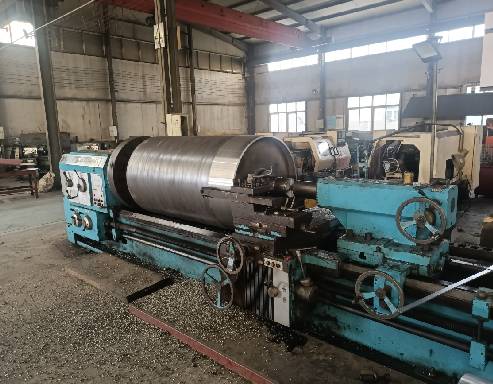 Afrikaans
Afrikaans  Albanian
Albanian  Amharic
Amharic  Arabic
Arabic  Armenian
Armenian  Azerbaijani
Azerbaijani  Basque
Basque  Belarusian
Belarusian  Bengali
Bengali  Bosnian
Bosnian  Bulgarian
Bulgarian  Catalan
Catalan  Cebuano
Cebuano  Corsican
Corsican  Croatian
Croatian  Czech
Czech  Danish
Danish  Dutch
Dutch  English
English  Esperanto
Esperanto  Estonian
Estonian  Finnish
Finnish  French
French  Frisian
Frisian  Galician
Galician  Georgian
Georgian  German
German  Greek
Greek  Gujarati
Gujarati  Haitian Creole
Haitian Creole  hausa
hausa  hawaiian
hawaiian  Hebrew
Hebrew  Hindi
Hindi  Miao
Miao  Hungarian
Hungarian  Icelandic
Icelandic  igbo
igbo  Indonesian
Indonesian  irish
irish  Italian
Italian  Japanese
Japanese  Javanese
Javanese  Kannada
Kannada  kazakh
kazakh  Khmer
Khmer  Rwandese
Rwandese  Korean
Korean  Kurdish
Kurdish  Kyrgyz
Kyrgyz  Lao
Lao  Latin
Latin  Latvian
Latvian  Lithuanian
Lithuanian  Luxembourgish
Luxembourgish  Macedonian
Macedonian  Malgashi
Malgashi  Malay
Malay  Malayalam
Malayalam  Maltese
Maltese  Maori
Maori  Marathi
Marathi  Mongolian
Mongolian  Myanmar
Myanmar  Nepali
Nepali  Norwegian
Norwegian  Norwegian
Norwegian  Occitan
Occitan  Pashto
Pashto  Persian
Persian  Polish
Polish  Portuguese
Portuguese  Punjabi
Punjabi  Romanian
Romanian  Russian
Russian  Samoan
Samoan  Scottish Gaelic
Scottish Gaelic  Serbian
Serbian  Sesotho
Sesotho  Shona
Shona  Sindhi
Sindhi  Sinhala
Sinhala  Slovak
Slovak  Slovenian
Slovenian  Somali
Somali  Spanish
Spanish  Sundanese
Sundanese  Swahili
Swahili  Swedish
Swedish  Tagalog
Tagalog  Tajik
Tajik  Tamil
Tamil  Tatar
Tatar  Telugu
Telugu  Thai
Thai  Turkish
Turkish  Turkmen
Turkmen  Ukrainian
Ukrainian  Urdu
Urdu  Uighur
Uighur  Uzbek
Uzbek  Vietnamese
Vietnamese  Welsh
Welsh  Bantu
Bantu  Yiddish
Yiddish  Yoruba
Yoruba  Zulu
Zulu Exploring the Benefits of Flat Return Idler for Enhanced Conveyor System Efficiency and Performance
Understanding Flat Return Idler A Crucial Component in Conveyor Systems
In the realm of material handling and conveyor systems, efficiency and reliability are paramount. Among the various components that contribute to the seamless operation of conveyor systems, the flat return idler plays a critical role. This article delves into what a flat return idler is, its significance, and its applications in various industries.
What is a Flat Return Idler?
A flat return idler is a type of roller used in conveyor systems designed to support the return side of the conveyor belt. Unlike traditional rollers that might feature grooves or specific shapes, flat return idlers have a smooth, flat surface. This design is intentional; it minimizes friction and wear on the conveyor belt, extending its operational life while ensuring smooth movement.
The idler serves as a structural support for the return pathway of the conveyor, where the belt returns to the loading side after transporting materials. This component is essential for maintaining the belt's tension and alignment, which is critical for the overall efficiency of the conveyor system.
Importance of Flat Return Idlers
Flat return idlers are vital for several reasons
1. Reducing Friction The flat surface minimizes friction between the idler and the conveyor belt, which helps in reducing energy consumption. Lower friction translates to less wear on the belt, prolonging its lifespan and reducing maintenance costs.
2. Preventing Misalignment A well-placed flat return idler aids in maintaining the correct alignment of the conveyor belt. Misalignment can lead to uneven wear, material spillage, and ultimately, system failure. The idler ensures that the belt remains stable and securely positioned throughout its operation.
flat return idler

3. Supporting Heavy Loads Flat return idlers are designed to withstand substantial weight and stress. In industries such as mining, manufacturing, and logistics, where heavy materials are commonly transported, these idlers provide the necessary support to prevent damage to the conveyor system.
4. Ease of Maintenance Many flat return idlers have features that allow for easy inspection and maintenance. This accessibility is crucial in minimizing downtime and ensuring that the conveyor system operates effectively.
Applications of Flat Return Idlers
Flat return idlers are prevalent in various industries, including
- Mining and Quarrying In these sectors, conveyors transport heavy materials like coal, ore, and gravel. Flat return idlers are essential for supporting the heavy loads and ensuring the smooth return of the belt.
- Manufacturing Conveyor systems are ubiquitous in manufacturing environments, moving products through various stages of production. Flat return idlers help maintain system efficiency, reducing downtime due to belt misalignment.
- Logistics and Distribution These industries rely heavily on conveyors to manage the flow of goods. Flat return idlers play a significant role in ensuring that packages and materials are transported accurately and efficiently, enhancing the overall productivity of the operation.
Conclusion
The flat return idler may seem like a simple component, but its impact on conveyor system performance cannot be overstated. By reducing friction, preventing misalignment, supporting heavy loads, and facilitating maintenance, flat return idlers contribute significantly to the efficiency and reliability of various industries. As technology advances and demands on conveyor systems evolve, the importance of optimizing components like the flat return idler will only continue to grow, ensuring smooth and effective operations across diverse applications.
-
Revolutionizing Conveyor Reliability with Advanced Rubber Lagging PulleysNewsJul.22,2025
-
Powering Precision and Durability with Expert Manufacturers of Conveyor ComponentsNewsJul.22,2025
-
Optimizing Conveyor Systems with Advanced Conveyor AccessoriesNewsJul.22,2025
-
Maximize Conveyor Efficiency with Quality Conveyor Idler PulleysNewsJul.22,2025
-
Future-Proof Your Conveyor System with High-Performance Polyurethane RollerNewsJul.22,2025
-
Driving Efficiency Forward with Quality Idlers and RollersNewsJul.22,2025





























